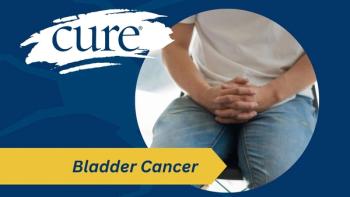
Keytruda Plus Chemo Improves Complete Response Rate in Breast Cancer
The combination of Keytruda to neoadjuvant chemotherapy, followed by Keytruda in combination with endocrine therapy improved pathologic response rates for patients with early-stage, high-risk, estrogen receptor (ER)–positive/HER2-negative breast cancer.
Incorporating Keytruda (pembrolizumab) with neoadjuvant chemotherapy, followed by Keytruda in combination with endocrine therapy, demonstrated enhanced improvements of pathologic complete responses (pCR; the disappearance of cancer) in individuals with early-stage, high-risk, estrogen receptor (ER)–positive/HER2-negative breast cancer, including subsets defined by geography, stage, baseline clinical lymph node involvement and PD-L1 expression, according to data from the phase 3 KEYNOTE-756 trial.
As previously reported at the 2023 ESMO Congress, at a median follow-up of 33.2 months (range, 9.7-51.8), 24.3% of patients who were given Keytruda (635 patients) achieved a pCR compared with 15.6% of those given placebo (643 patients), meeting a primary endpoint of the trial. A pCR defined as ypT0 and ypN0, meaning that there is no cancer in the breast and axillary nodes was reported in 21.3% and 12.8% of patients in the Keyruda and placebo arms, respectively and a pCR defined as ypT0/Tis, meaning that there is no cancer in the lymph nodes and the disease is not growing into healthy parts of the breast, was observed in 29.4% and 18.2% of patients, respectively.
New data from subgroup analyses presented at the 2023
The benefits of Keytruda over placebo were also observed irrespective of geographic region. In the group of patients from China, those given Keytruda (88 patients) or placebo (91 patients) experienced pCRs of 12.5% and 9.9%, respectively. In the subset of patients from Eastern Europe, the pCRs achieved with Keytruda (139 patients) and placebo (130 patients) were 29.5% and 16.2%, respectively. In patients from all other countries, those given the immunotherapy (408 patients) experienced a pCR of 25.0% vs 16.6% in those who received placebo (422 patients).
The benefit derived with Keytruda increased with increasing PD-L1 expression. In the group of patients with a PD-L1 combined positive score (CPS) of less than 1, Keytruda (153 patients) elicited a pCR of 7.2% vs 2.6% with placebo (154 patients). In the group of patients with a PD-L1 CPS ranging from 1 to 9, pCRs achieved with Keytruda (229 patients) and placebo (230 patients) were 15.7% and 9.1%, respectively. In those with a PD-L1 CPS of 1 or higher, pCR rates were 29.7% and 19.6% with Keytruda (482 patients) and placebo (489 patients), respectively. In those with a PD-L1 CPS of 10 or higher, the pCR achieved with Keytruda (253 patients) was 42.3% vs 29.0% with placebo (259 patients). Lastly, in the group of patients with the highest PD-L1 expression, a CPS of 20 or higher, the pCR rates achieved with Keytruda (125 patients) and placebo (129 patients) were 53.6% and 36.4%, respectively.
When evaluating by ER status and PD-L1 expression, Keytruda continued to elicit higher pCRs than placebo. In the subgroup of patients with a PD-L1 CPS of 1 or higher and ER positivity of less than 10%, the pCR rate with Keytruda (33 patients) was 57.6% vs 33.3% with placebo (39 patients). In those with a PD-L1 CPS of at least 1 who had ER positivity of 10% or higher and who were given Keytruda (449 patients) or placebo (450 patients), the pCRs were 27.6% and 18.4%, respectively. In the group of patients with a PD-L1 CPS of less than 1 who had ER positivity of 10% or higher and who received Keytruda (152 patients), the pCR was 7.2%; in those who received placebo (150 patients), the pCR was 2.7%
“(The) addition of Keytruda to neoadjuvant chemotherapy led to a statistically significant increase in pCR in the intention-to-treat (ITT) population,” Dr. Joyce O’Shaughnessy, Celebrating Women Chair in Breast Cancer Research at Baylor University Medical Center and director of the Breast Cancer Research Program at Texas Oncology, US Oncology, in Dallas said in a presentation of the data. “A larger magnitude of pCR benefit was observed in patients with node-positive disease, higher PD-L1 CPS thresholds, and ER-low tumors (defined as less than 10%).”
Patients with locally confirmed invasive ductal breast carcinoma who had tumors ranging between 2cm and 5 cm, and one to two positive lymph nodes or tumors larger than 5 cm to tumors growing in the chest wall disease with zero to two positive lymph nodes were enrolled in the KEYNOTE-756 trial. Patients needed to have centrally confirmed ER-positive, HER2-negative, grade 3 disease and they could not have received prior treatment.
A total of 1278 participants were randomly assigned to receive Keytruda at 200 mg or placebo every three weeks for four cycles in combination with paclitaxel at 80 mg/m2 weekly for 12 weeks. This was followed by Keytruda at 200 mg or placebo plus either doxorubicin at 60 mg/m2 every three weeks or epirubicin at 100 mg/m2 every 3\three weeks in combination with cyclophosphamide at 600 mg/m2 every two or three weeks for frou cycles. After definitive surgery, patients went on to receive adjuvant Keytruda at 200 mg every three weeks or placebo for six months paired with endocrine therapy for up to 10 years and concurrent or sequential radiation therapy if indicated
Participants were stratified by geographic location. Those in Eastern Europe were substratified by PD-L1 status (CPS ≥1 vs <1) and those in all other countries were substratified by PD-L1 status (CPS ≥1 vs CPS <1), nodal status (positive vs negative), anthracycline schedule (every two weeks vs every three weeks) and ER positivity (1% to 9% vs 10% or higher). Within China, there were no substratification factors.
The dual primary end points of the trial are pCR per local pathologist assessment at the time of definitive surgery in the ITT population and investigator-assessed event-free survival (EFS; the measure of time after treatment that a group of people in a trial has not had cancer come back/ worsen)in the ITT population. Secondary end points include evaluation of pCR by alternative definitions (ypT0, ypN0, and ypT0/Tis); overall survival (OS; time from treatment to death, regardless of disease recurrence.); pCR, EFS and OS in the subgroup of patients with a PD-L1 CPS of 1 or higher; and safety. Residual cancer burden assessment serves as an exploratory end point.
Interim analysis 1 was conducted approximately 10 months after the last patient was randomized and included all who underwent randomization and “who had or should have completed surgery at that time,” O’Shaughnessy stated. The data cutoff date for the analysis was May 25, 2023. “It was the final and only analysis for pCR and the first EFS interim analysis,” O’Shaughnessy said, noting that there was a statistically significant difference in EFS rates.
The treatment arms were generally well balanced with regard to key patient characteristics, according to O’Shaughnessy. The median age of patients in both the Keytruda and placebo arms was 49 years (range, 19-82). In the immunotherapy arm, 75.9% of patients had a PD-L1 CPS of 1 or higher and 39.8% had a CPS of 10 or higher; these rates were 76.0% and 40.3%, respectively, in the placebo arm. In the Keytruda arm, 13.9% of patients were from China, 21.9% were from Eastern Europe and 64.3% were from other countries; these rates were 14.2%, 20.2% and 65.6%, respectively, in the placebo arm.
Most patients across the Keytruda and placebo arms had stage 2 disease (62.8% vs 63.5%) and the remainder had stage 3 disease (37.2% vs 36.5%). Most patients received anthracyclines every three weeks (65.4% vs 66.1%) rather than every two weeks (28.8% vs 29.1%); 5.8% of those in the Keytruda arm and 4.8% of those in the placebo arm did not start treatment. Regarding tumor size in the Keytruda arm, 63.3% had tumors smaller than 2 cm and 36.7% had had tumors 5 cm or larger or growing into the chest wall or skin, in the placebo arm, these rates were 64.2% and 35.8%, respectively. The majority of patients across the arms had positive nodal involvement at baseline (89.8% vs 90.5%) and ER positivity of 10% or higher (94.6% vs 93.3%).
“Residual cancer burden from 0 to 3 represents increasingly larger residual disease in the breast and/or axillary lymph nodes at definitive surgery,” O’Shaughnessy said. “The addition of Keytruda to neoadjuvant chemotherapy shifted more patients from lower risk to lower residual cancer burden categories.”
Of those who received Keytruda, 35% had a residual cancer burden of 0 or 1 vs 23.6% of those who were given chemotherapy. Moreover, 40.8% of those given Keytruda and 45.3% of those who received placebo had a residual cancer burden of 2; 20.5% and 28.9% of patients, respectively had a burden of 3.
“Patients who received less than the planned chemotherapy doses had lower pCR rates, although pCR rates were improved with Keytruda, regardless of chemotherapy exposure,” O’Shaughnessy said.
Just under 86% (85.6%; 543 patients) of patients in the Keytruda arm had full chemotherapy exposure, defined as weekly doses of paclitaxel for 10 to 12 doses, doxorubicin every two or three weeks for four doses or epirubicin every two or three weeks for four doses, and cyclophosphamide every two or three weeks for four doses, regardless of exposure to the immunotherapy; 14.4% (91 patients) had less than full exposure. In the placebo arm, these rates were 87.8% (563 patients) and 12.2% (78 patients), respectively
In the subset of patients with full chemotherapy exposure, Keytruda elicited a pCR of 26.2% vs 16.9% with placebo. In those with less than full exposure, these rates were 13.2% and 6.4%, respectively
Immune-mediated side effect rates proved to be consistent with the known toxicity profile of neoadjuvant Keytruda and chemotherapy. No new safety concerns were observed, according to O’Shaughnessy.
Specifically, any-grade immune-mediated side effects occurred in 32.8% of those who received the immunotherapy vs 7.0% of those given placebo; these effects were grade 3 to 5 for 7.1% and 1.2% of patients, respectively. Serious immune-mediated side effects occurred in 6.2% of those in the Keytruda arm vs 1.7% of those in the placebo arm, but none of these side effects resulted in death. Immune-mediated side effects led to discontinuation of any agent for 7.7% of those in the Keytruda arm and 1.6% of those in the placebo arm.
The most common immune-mediated side effects experienced by at least 5 patients in either the Keytruda or placebo arm included hypothyroidism (17.5% vs 1.7%), hyperthyroidism (9.0% vs 0.5%) and pneumonitis (2.8% vs 1.4%).
“The study is powered to evaluate EFS as the dual primary end point. The EFS results are immature and continue to be evaluated,” O’Shaughnessy concluded.
For more news on cancer updates, research and education, don’t forget to





